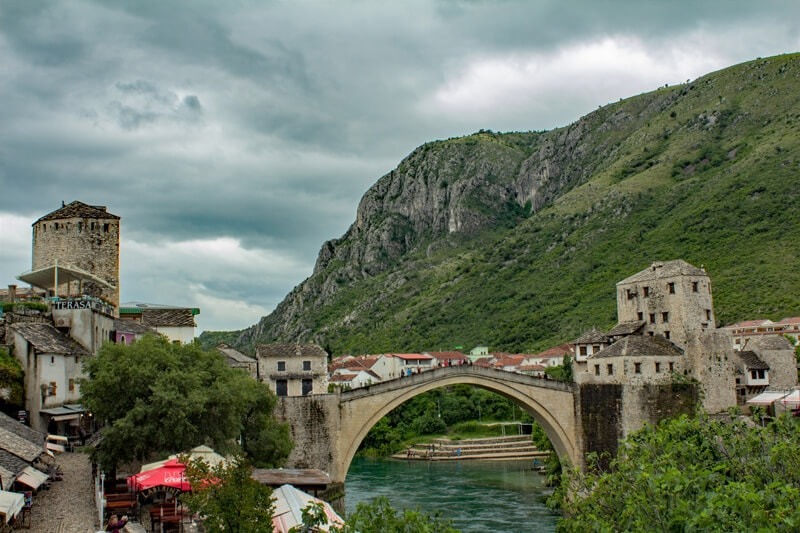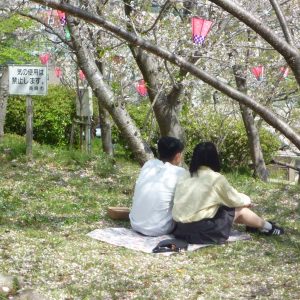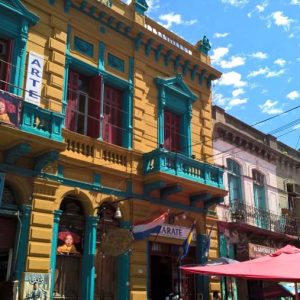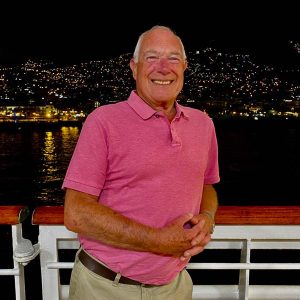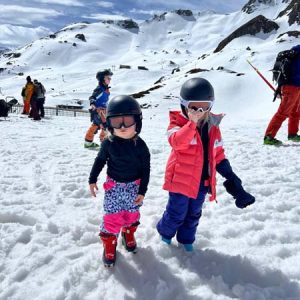From skating to siege
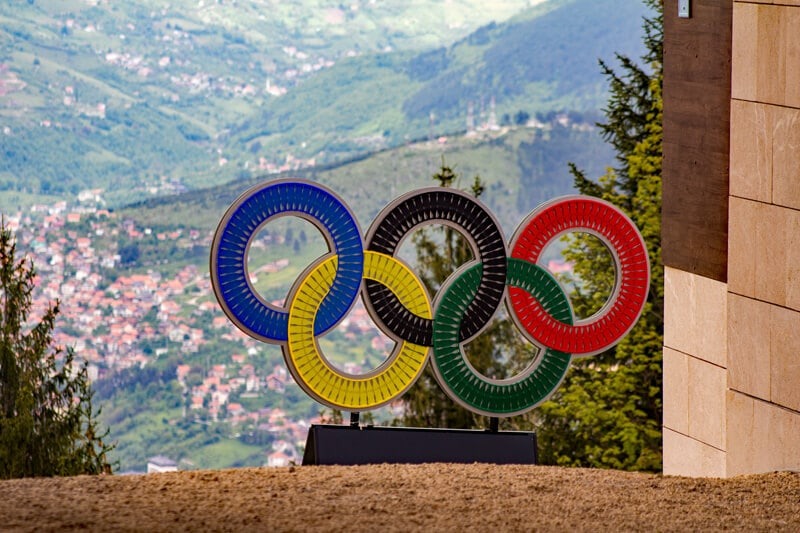 Bosnia, or to use its full name, Bosnia and Herzegovina, is more often than not, associated with the atrocities in the 1990s or Torvill and Dean winning a Gold Medal at the Sarajevo Winter Olympics in 1984. Having also read about its unspoilt nature, Ottoman towns and fascinating, but complicated history, we embarked on an 8-night tailor-made tour.
Bosnia, or to use its full name, Bosnia and Herzegovina, is more often than not, associated with the atrocities in the 1990s or Torvill and Dean winning a Gold Medal at the Sarajevo Winter Olympics in 1984. Having also read about its unspoilt nature, Ottoman towns and fascinating, but complicated history, we embarked on an 8-night tailor-made tour.
We entered Bosnia overland from Serbia and just after crossing the border, visited the ‘stone town’ of Visegrad and the Bridge on the Drina, the title of a notable work by Ivo Andric (Yugoslavia’s only Nobel prize winning author) and one of our pre-trip reads.
Sarajevo – 4 nights
In the capital Sarajevo, we stayed at the boutique Ada Hotel, formerly the residence of the Swedish Ambassador. It was impossible to avoid sobering reminders of the Bosnian War: Sarajevo ‘roses’, scars in the pavement filled with red resin, marking the spot where at least three people had been killed by mortar shells; graveyards full of white marble pillars on the surrounding hillside and damaged buildings still awaiting restoration. We also visited the Tunnel Museum and History Museum of Bosnia and Herzegovina, to gain a better understanding of what life had been like during the 1,452-day siege.
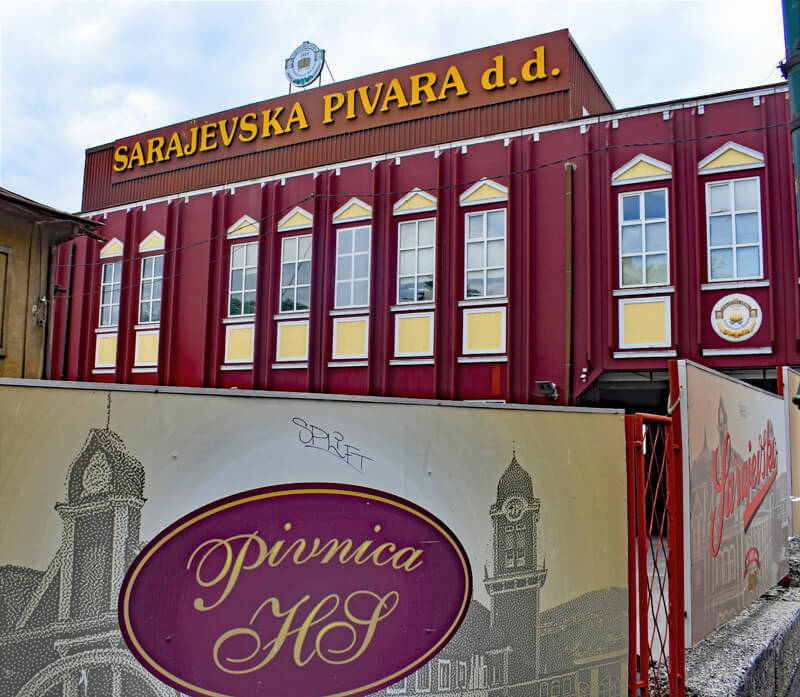 To prepare for our trip, we’d read several books, including ‘The Cellist of Sarajevo’ and ‘Besieged: Life under fire on a single street’. Both described the brewery, the only source of drinking water, which had to be collected daily in plastic containers. Seeing for ourselves the distances involved and the proximity of the hills with their sniper positions, vividly brought home the dangers citizens faced in attempting to survive.
To prepare for our trip, we’d read several books, including ‘The Cellist of Sarajevo’ and ‘Besieged: Life under fire on a single street’. Both described the brewery, the only source of drinking water, which had to be collected daily in plastic containers. Seeing for ourselves the distances involved and the proximity of the hills with their sniper positions, vividly brought home the dangers citizens faced in attempting to survive.
Sarajevo is also connected with another war: the assassination of Archduke Franz Ferdinand which became the catalyst for World War 1. The spot is marked and there is a small, but interesting museum.
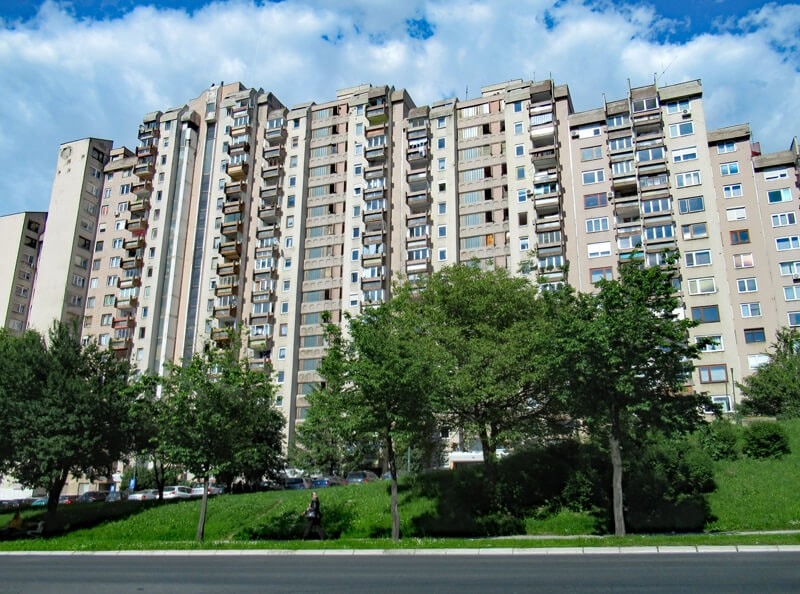 However, the history dates back to the Illyrian period, through Ottoman and Austro-Hungarian rule to Tito’s communism and eventually, independence in 1992. Buildings from each era could be easily identified and in Egipat, the display of cakes were divided between gateaux, a legacy of the Austro-Hungarians and Ottoman inspired, baklavas. The compact city, with its pedestrianised old town and bazar, was perfect for wandering and visiting places of worship along the way. Religions had always coexisted peacefully, and surprisingly this still exists today, so we found mosques and Serbian Orthodox churches side by side.
However, the history dates back to the Illyrian period, through Ottoman and Austro-Hungarian rule to Tito’s communism and eventually, independence in 1992. Buildings from each era could be easily identified and in Egipat, the display of cakes were divided between gateaux, a legacy of the Austro-Hungarians and Ottoman inspired, baklavas. The compact city, with its pedestrianised old town and bazar, was perfect for wandering and visiting places of worship along the way. Religions had always coexisted peacefully, and surprisingly this still exists today, so we found mosques and Serbian Orthodox churches side by side.
Jajce – 1 night
We broke the drive between Sarajevo and Mostar with one night in Jajce. We were finding the history of the former Yugoslavia rather complex, but visiting the museum here, helped us understand the importance of decisions made in 1943 about the creation of the country from the six states. Given Tito’s massive influence, it was probably no surprise to find three large portraits of him adorning the walls of our room at the Hotel Stari Grad.
Mostar – 3 nights
The country’s second city of Mostar, is probably more well-known as it can be visited on a day trip from its neighbours Croatia and Montenegro. The rebuilt Stari Most bridge is its most iconic sight and was only a short walk from our hotel, Villa Fortuna. As we stayed for three nights, we timed our visits to the less busy times.
Around Bosnia and Herzegovina
Spending a few nights in both Sarajevo and Mostar, allowed us to visit sights around them. From the former, we drove into the mountains for a morning’s hike around Lukomir Village and to learn about their rural way of life. Whilst from Mostar, we saw the second most visited Catholic pilgrimage site at Medjugorje, as well as a Roman villa, 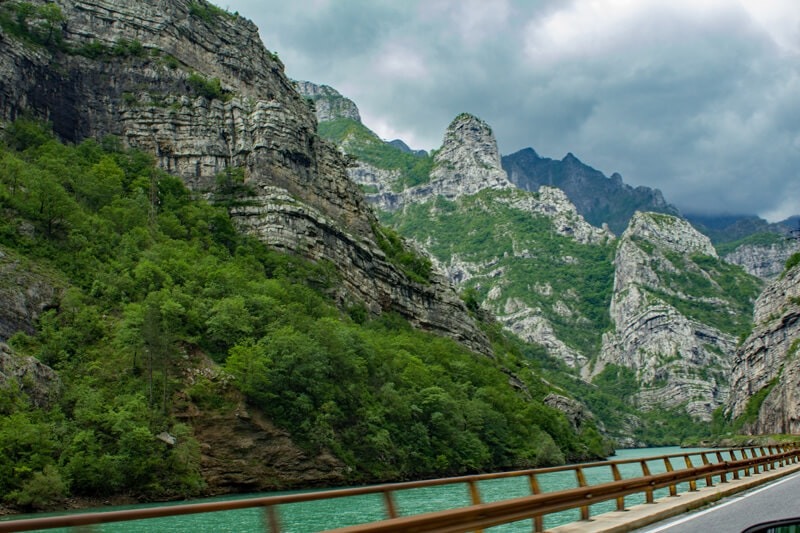 Ottoman inspired fortress and Dervish monastery.
Ottoman inspired fortress and Dervish monastery.
We travelled around by car with our excellent guide/driver, Lorenc. This allowed us to appreciate the stunning views, villages, canyons, wildflower-clad hills, rocky mountains, waterfalls, bridges and turquoise rivers. We stopped frequently visiting the Radimlja Necropolis,Travnik, to visit the Memorial Museum of Ivo Andric, Ajvatovica, the site of the largest Islamic cultural event in Europe and Jablanica, known for the Battle of the Neretva.
Food and Drink
As always, cuisine was a major feature of our trip. The most famous dish is ćevapi, small thumb-sized lamb kebabs, usually served in portions of 10 with pita bread and onions. We also enjoyed a memorable lamb dish at Zdrava Voda, when travelling between Jajce and Mostar, where roadside restaurants grilled whole lambs with potatoes underneath, mopping up the dripping fat.
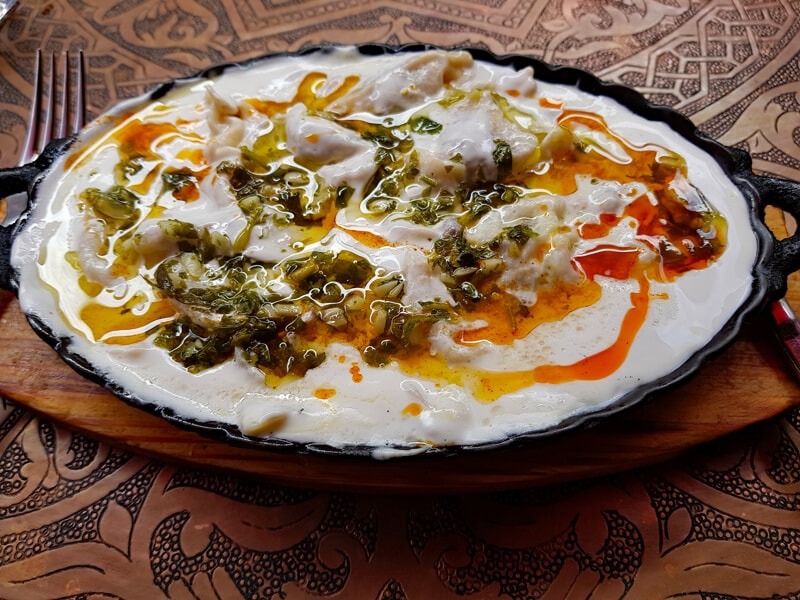 Another traditional dish was klepe, a type of ravioli served in a yoghurt sauce, which I tried in Sadrvan in Mostar, whilst Babilon served stuffed peppers and vine leaves. However, international fare was available and pizzas were good at Nide Veze. We found few vegetables, but a shopska salata, of diced cucumber, tomatoes and onion topped with grated cheese, was often served with main dishes.
Another traditional dish was klepe, a type of ravioli served in a yoghurt sauce, which I tried in Sadrvan in Mostar, whilst Babilon served stuffed peppers and vine leaves. However, international fare was available and pizzas were good at Nide Veze. We found few vegetables, but a shopska salata, of diced cucumber, tomatoes and onion topped with grated cheese, was often served with main dishes.
For dessert, ice creams abounded and hurmašica was a popular date-shaped pastry soaked in a very sweet syrup sauce.
Tap water was safe to drink and on our walks, Lorenc frequently stopped to drink from mountain springs and spouts. The local spirit, rakija, a fiery 45% spirit often made with fruits, was drunk seemingly at any time of day. Locally brewed beer, pivo, was widely available and cheap whilst wine was similarly reasonably priced and from Bosnia’s neighbours, Montenegro and Croatia.
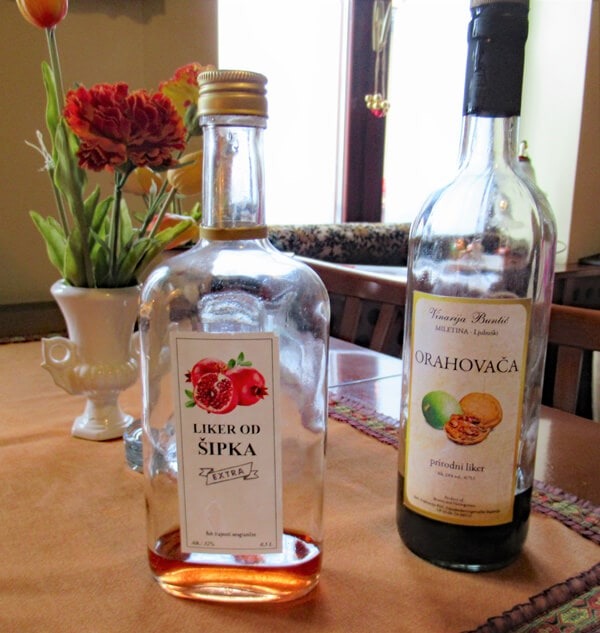 Bosnian’s love coffee and although a traditional Turkish-style cup was served with breakfast at Sarajevo’s Ada Hotel, we preferred a cup of good espresso.
Bosnian’s love coffee and although a traditional Turkish-style cup was served with breakfast at Sarajevo’s Ada Hotel, we preferred a cup of good espresso.
Smoking is permitted in many restaurants and, as many Bosnians have not lost the significant habit acquired during the war, there was often a haze of smoke.
Climate
The country’s climate varies dramatically. Herzegovina, the area in the south near the Adriatic, enjoys a Mediterranean climate with mild winters, whilst the north has warm summers and cold, snowy winters. In May, we experienced sunny days and rain, but this didn’t in any way hamper our enjoyment.
There is no doubt that Bosnia and Herzegovina is an emotional country, but it’s very underrated and we met very few British tourists: now is definitely the time to visit.
